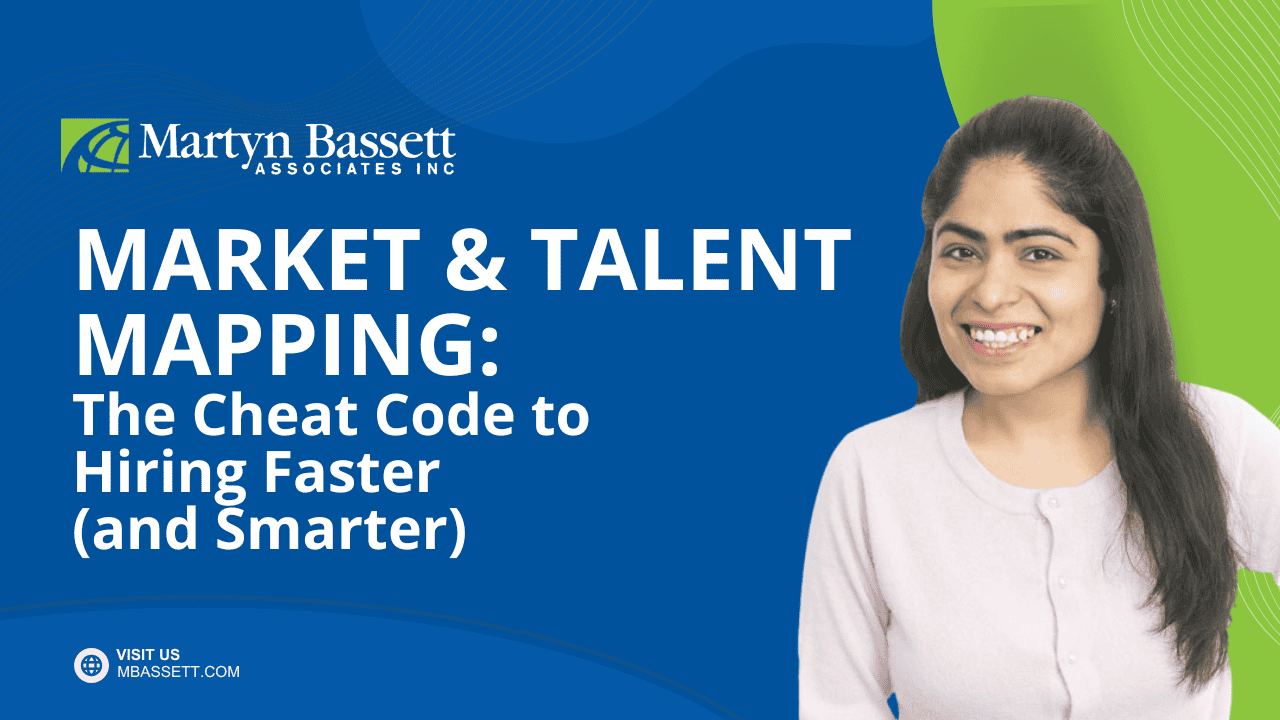Why You Should Care
You’re building a company and product that will change the game, great! But you’re going to need help, and if you don’t know where the right candidates are or how to reach them, growth stalls.
Market & talent mapping is the GPS for your hiring roadmap. Nail it early, and you will:
- Keep a pipeline warm before you have headcount approved
- Steal time back from reactive “spray-and-pray” recruiting
- Out-maneuver better-funded competitors hunting the same talent
Here are a few of the tips and tricks our talented Executive Recruiter, Priya Golani, use always to find the right candidates for our clients:
1. Market Mapping: Pinpoint the Right Companies
Market mapping is basically building a “hit list” of companies whose people already solve the kinds of problems your product tackles. Think of it as competitive intel + talent radar in one doc.
| Step | What You’re Doing | Outcome |
| Define the problem space | What pain does your product kill? (e.g., “omni-channel retail data mess”) | Clear filters for company search |
| Layer in context | Industry, stage, geo, tech stack, funding, etc. | A refined company universe |
| Expand sideways | Adjacent spaces: if you’re in warehousing SaaS, peek at logistics, inventory, even manufacturing ERP | Fresh pockets of talent your rivals overlook |
| Validate with humans | Ping advisors, ex-colleagues, VC slack groups | Reality-check the list |
Tools that don’t suck: Gartner/CB Insights, Crunchbase, LinkedIn Sales Nav, industry Slack communities, past hires your investors or Hiring Managers rave about.
2. Talent Mapping: Turn That List Into People
Now we go granular: names, org charts, and inboxes.
- Map the org: Scan LinkedIn + company pages to sketch who owns what (i.e. PM, Growth, Analytics, Design, etc.)
- Boolean like a boss: examples to surface exact matches:
"product manager" AND ("omni-channel OR ECOMMERCE OR “E-COMMERCE”) AND Shopify
- Skip the gatekeepers: ZoomInfo / Apollo for personal emails or warm intros through shared investors.
- Recycle the near-misses: Not now ≠ never. Tag solid “maybes” in your ATS for the next role.
- Referrals still work: Every A-player knows two more. Ask for them.
Pro tip: Keep a living Airtable with columns for Engaged?, Stage?, Notes, Next Touch. Treat it like a mini-CRM, because it is.
3. Common Pitfalls (and Fast Fixes)
| Mistake | Why It Hurts | Quick Fix |
| Only chasing FAANG alumni | Everyone else is doing this too | Add mid-market disruptors (where employees wear multiple hats) to your lists |
| Ignoring geography | Remote ≠ time-zone agnostic | Cluster by ±3 hours of your sprint reviews and team meetings |
| Static lists | Talent moves every 18 months | Block 30 min monthly to refresh data |
4. Your 30-Day Action Plan
Week 1: Write a one-pager on your solution’s core problem and ideal hire outcome.
Week 2: Build a 50+ company target list (use Crunchbase filters + founder Slack crowdsourcing).
Week 3: Identify 3–5 people per company; log them with contact info and notes.
Week 4: Launch personalized outreach (10 -20 DMs/day) while also reaching out to existing network and connections for referrals.
Stick to this cadence and you’ll always have qualified candidates in the queue.
TL;DR
Market mapping tells you where the gold is.
Talent mapping tells you who to call.
Do both and you’ll scale faster than founders who rely on luck (or a job board).
Need a Shortcut?
Martyn Bassett Associates turns market and talent mapping into muscle memory. In days, not months, we zero in on the right companies, surface the right names, and leverage our reputation to open doors that cold outreach can’t.
